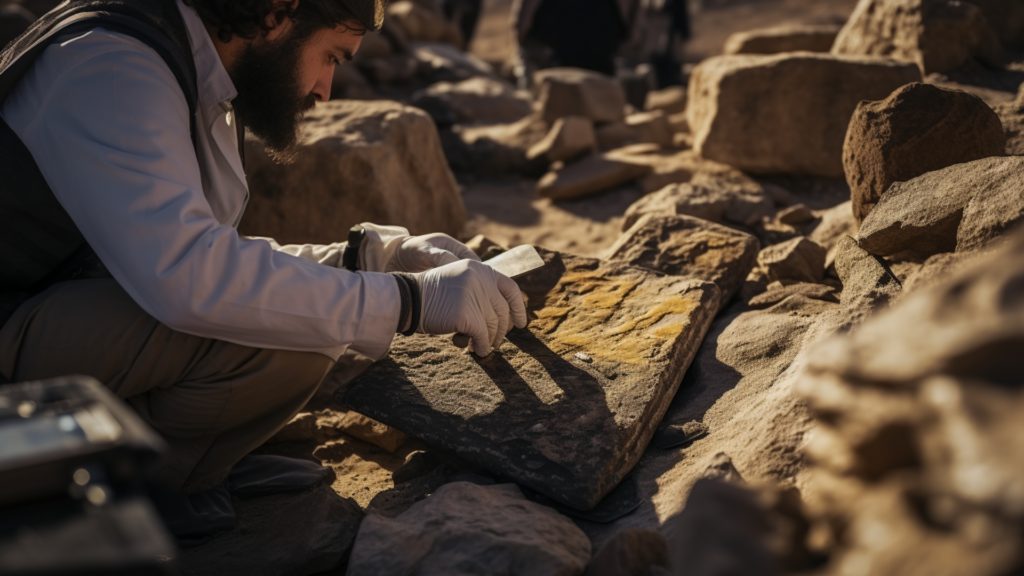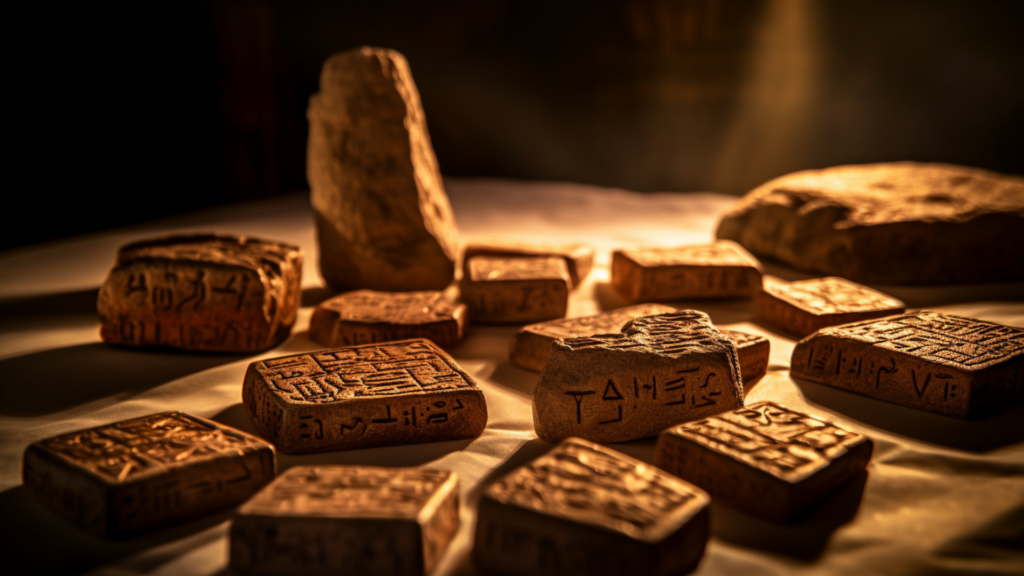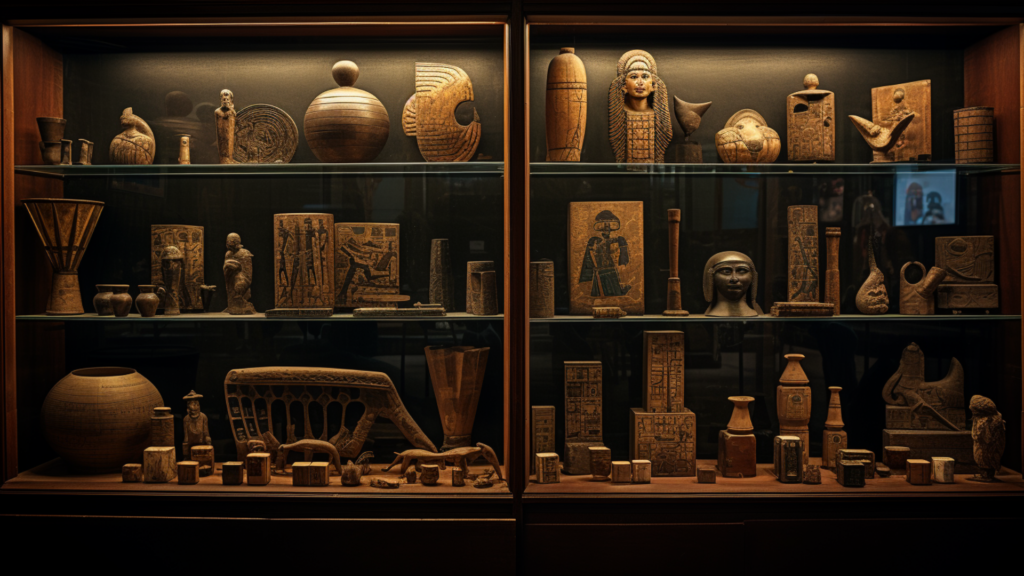The rise, development, and expansion of humanity’s first complex civilization— brought to light by the unearthing of cuneiform tablets over four millennia old.

Delving into the layers of history, an archaeological discovery often acts as a portal to bygone eras, offering a tangible connection to the world’s earliest civilizations. Mesopotamia is an ancient region located in the eastern Mediterranean, bounded in the northeast by the Zagros Mountains and in the southeast by the Arabian Plateau. Its name comes from the Greek words ‘mesos’ meaning middle and ‘potamos’ meaning river, primarily referring to the land between the Tigris and Euphrates rivers. The region corresponds to modern-day Iraq and parts of Iran, Syria, Kuwait, and Turkey, and is known as the Fertile Crescent and the cradle of civilization.
A Tie to the Distant Past
This archaeological discovery isn’t just about unearthing objects; it’s about resurrecting the life stories of those who contributed to the dawn of urban development, writing, and law. With each buried artifact drawn to the surface, we piece together the narrative of human progress, from primitive tool usage to the complexities of social governance that laid the foundation for modern-day systems. The fragments of cuneiform tablets, the grandeur of ziggurats, and the artistry of ancient artifacts all speak of a time when humanity was taking its first collective steps towards organized life.
These discoveries in Mesopotamia also serve as a testament to the ingenuity of our ancestors, revealing not only their daily lives but their cosmic beliefs, as they gazed upon the same stars we see today. As we walk you through this archaeological discovery, you’re invited to witness the unveiling of a 4,000-year-old mystery, wrapped in the enigma of ancient scripts and long-forgotten lore.
The past of Mesopotamia, once shrouded in the sands of time, is now being brought to light, offering insights that resonate with our quest to understand our origins and the unrelenting human spirit that continues to thrive in the face of time’s relentless march.
Decoding History and the Role of Cuneiform Tablets in Archaeological Discovery
The archaeological discovery of cuneiform tablets in the ancient soils of Mesopotamia is akin to unlocking a time capsule— one that holds the administrative records, poetic verses, and legal proceedings of a civilization that thrived over 4000 years ago. These clay tablets, inscribed with one of the earliest known writing systems, are more than mere artifacts; they serve as the keys to comprehending a complex society that laid the foundations for contemporary cultures.

Every tablet excavated is a narrative piece, a fragment of history etched in mud and baked in the sun, now speaking volumes to those willing to decode its contents. The script, once a mystery to the modern eye, has been meticulously deciphered by scholars, making the archaeological discovery of these tablets a watershed event in understanding our collective past. Through them, we have learned about the Mesopotamians’ advanced grasp of mathematics and astronomy, their sophisticated economic systems, and their social hierarchies, among others.
Such archaeological discoveries also shine a light on Mesopotamia’s legal systems, with the Code of Hammurabi being one of the most significant finds. The code’s cuneiform inscriptions offer a glimpse into the principles of justice that governed their society, many of which echo in the corridors of modern law.
From the simplest trade transactions to the grandest of royal decrees, these cuneiform tablets serve as a testament to the rich, orderly, and culturally vibrant life that once pulsed through Mesopotamia, making them invaluable to the archaeological canon and our understanding of early human civilization. Thanks to these discoveries, we’re now able to not just live through ancient structures by, say, checking into the Mirsoum Hotel Hotel or a rental apartment in some historic stone building. We can now also understand the life our ancestors lived in a more profound manner.
Bronze Age Brilliance: Uncovering the Technological Advances through Archaeological Finds
The archaeological discovery of Bronze Age relics has continually shed light on the ingenuity and technological prowess of ancient Mesopotamian civilizations. The period, characterized by the advent of metal alloy tools, marks a revolutionary stride in human capability and cultural complexity. Recent archaeological discoveries have also unearthed a plethora of tools, weapons, and artifacts that highlight a significant leap in craftsmanship and societal development.
Bronze, an alloy of copper and tin, was more than just a material for creation back then; it was the harbinger of progress, enabling the Mesopotamians to cultivate lands with greater efficiency, build sturdier structures, and sculpt intricate artworks. Such archaeological discoveries paint a picture of a society that was stepping into an era of prosperity and power, bolstered by advancements that would define an intelligent age.

These discoveries also offer a window into the trade networks established by the Mesopotamians, as the acquisition of tin required far-reaching trade routes. This not only underscores their economic expansion but also their influence and interactions with distant cultures.
Moreover, the architectural remains from the era, revealed through archaeological discovery, demonstrate a sophisticated understanding of urban planning and water management, necessary for the thriving cities of Mesopotamia.
The emergence of Bronze Age tools and weapons through archaeological finds also signifies a shift in warfare and defense tactics, indicating a time of territorial expansion and fortified cities. Technological advances of the era have likewise left an indelible mark on the course of human history, with their impact still resonating in the underpinnings of modern civilization.

Find Out About Other Exciting Archaeological Discoveries with This City Know
Discover the whispers of history through more archaeological discoveries that piece together the human saga. With This City Knows, you’re not just reading about the past; you’re stepping into the narrative of ancient civilizations. Witness the evolution of humanity, uncover the tapestry of time, and marvel at the ingenious engineering of the ancients— one city at a time.
Ready to traverse the annals of time? Visit ThisCityKnows.com and become part of the ongoing story that is our shared history!








